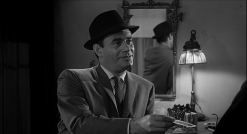
Jesús González Requena
Seminario Psicoanálisis y Análisis Textual 2013/2014
Sesión del 22/11/2013
Universidad Complutense de Madrid
de esta publicación: gonzalezrequena.com, 2014
- Hoteles
- Un territorio deslocalizado, carente de etiquetas
- Mapas, signos y lugares donde puedan existir los sujetos
- Un libro que sea un mapa de nombres en el tiempo
- Nombra: restituye el nombre, sustenta al sujeto
- Un dibujo mental
- El fantasma en torno al cual se conforma la escena fantasmática
Hoteles
Ocupémonos ahora de los hoteles que visita Arbogast antes de dar con el de los Bates.

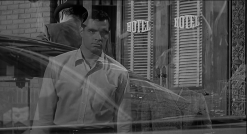

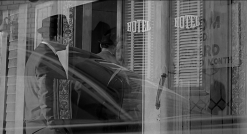
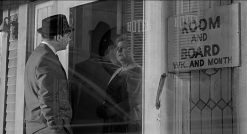
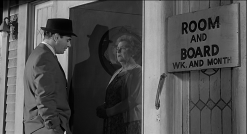
Es ciertamente inquietante el rostro de esta mujer, localizado en el centro superior del plano y rodeado por el marco circular del cuadro o espejo que hay tras ella.
No menos extraña es la imagen en su conjunto. Entre el rostro de la mujer y el de Arbogast, se proyecta, sobre el cristal que les separa, la sombra de éste, convertida en una sombra en espejo que parece mirarle a él mismo, y tras la cual se encuentra la mirada de la mujer.
Y atiendan a esto otro que ha sucedido solo un instante antes:
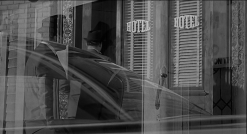
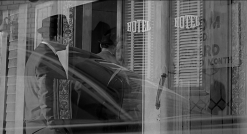
parece que Arbogast se fundiera con ella,

de modo que de ahí, de esa fusión, procediera esa sombra.

Y a continuación esa sombra se convierte en una alta figura
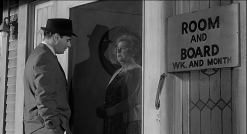
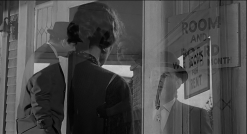
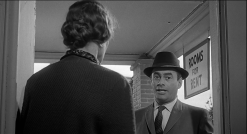
cuyo moño hacer retornar la memoria -pero sin duda inconsciente, pues el espectador no tendrá tiempo para que la idea cristalice en su conciencia- del de la madre.
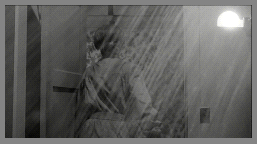
Un nuevo fundido da paso a la imagen del detective, empequeñecida, atravesando la puerta de otro hotel.
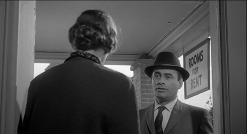


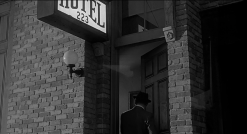
Lo que nos conduce a la modulación global que preside este breve fragmento de las visitas de Arbogast a los hoteles de Fairville. Según avanza, plano a plano, encadenado a encadenado, la figura del detective no cesa de decrecer, mientras que crece, en cambio, las de las inquietantes mujeres que le reciben.
Un territorio deslocalizado, carente de etiquetas
¿Quién es Arbogast?
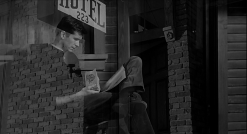

Norman come sus caramelos mientras lee un libro sobre aves, hasta que repara en el coche que se acerca.


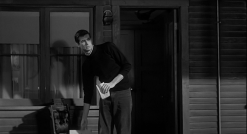
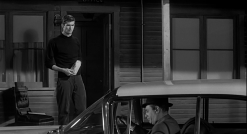
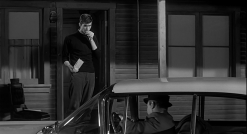
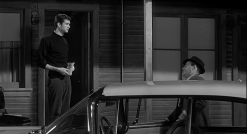
Arbogast: Evening.
Norman: Evening.
De modo que Arbogast es, en primer lugar, alguien que viene a irrumpir en el territorio de los caramelos y las aves.
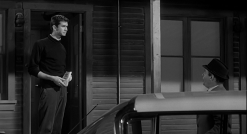
Arbogast: l almost drove right past.
Alguien, también, que señala la deslocalización del territorio de los Bates.
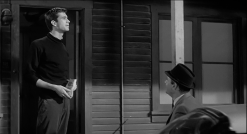
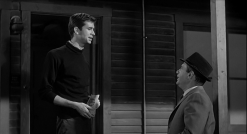
Norman: l’m always forgetting to turn the sign on, but we do have a vacancy.
De modo que con su llegada se suscita la cuestión de los signos y las etiquetas.
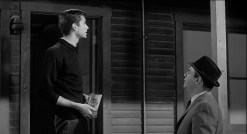
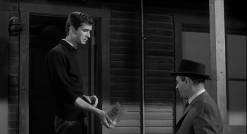
Norman: Twelve, in fact. Twelve cabins, twelve vacancies. Candy?
Y es también alguien referenciado a la cifra 12, que se repite de nuevo, tres veces más.
De ella ya hemos dicho casi todo, pero queda una cosa por añadir: si es la cifra de la muerte del padre, es igualmente la cifra de su ausencia: 12 habitaciones vacías.
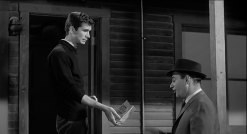
Arbogast: No, thanks.

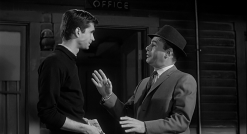

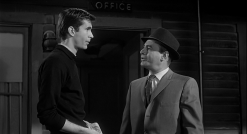
Arbogast: Last two days, l’ve been to so many motels my eyes are bleary with neon, but, you know, this is the first place that looks like it’s hiding from the world.
Les hablaba de deslocalización: un sitio escondido del mundo.
Es decir: un sitio que, aunque forma parte del territorio, no figura en los mapas. Un sitio sin etiquetas:

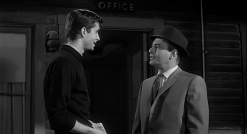
Norman: Well, l’ll tell you the truth. l didn’t really forget to turn the sign on. Just doesn’t seem like any use any more, you know.
Dense cuenta, por lo demás, de que el diálogo se organiza sobre ese rectángulo negro -el de la puerta abierta- que se encuentra entre ambos personajes.
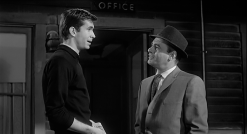
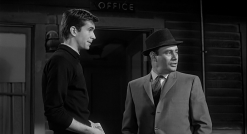
Norman: See, that used to be the main highway right there.

Norman: Well, wanna come in and register?
Arbogast: No, no, sit down. l don’t wanna trouble you. l just wanna ask a few questions.
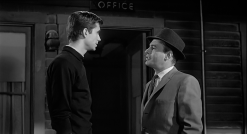
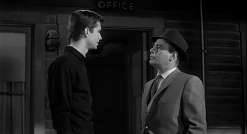
Norman: No, that’s no trouble. Today’s linen day. l always change the beds here once a week whether they’ve been used or not. Hate the smell of dampness, don’t you? lt’s such a…
Norman odia la humedad. -Y al fondo se dibuja el cadáver húmedo de Marion.
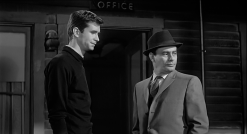
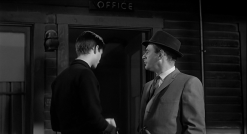
Norman: l don’t know, creepy smell. Come on.
Un olor espeluznante.
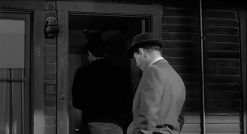
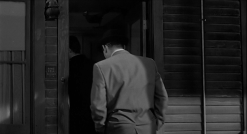
Arbogast: Hum.
Mapas, signos y lugares donde puedan existir los sujetos

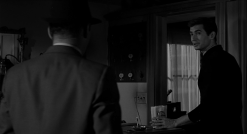
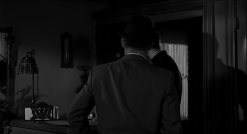
Norman: You out to buy a motel?
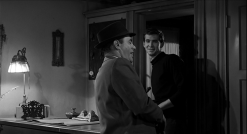
Arbogast: No.
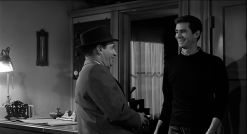
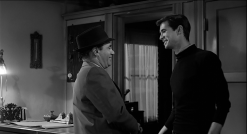
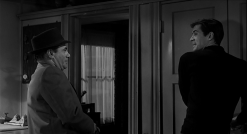
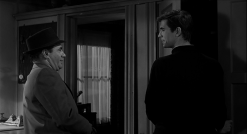
Norman: Reason l ask, you said you’d seen so many in the past couple of days, l thought maybe you…
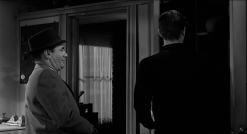
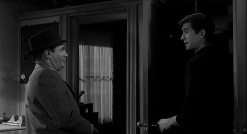
Norman: What… What was it you wanted to ask?
La pregunta era: ¿quién es Arbogast?
Pues bien, Arbogast es definible por la pregunta que viene a formular:
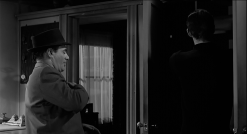
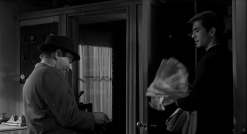
Arbogast: Well, you see, l’m looking for a missing person.
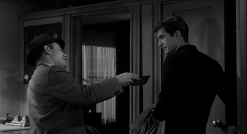
Arbogast: My name’s Arbogast. l’m a private investigator.
Ven hasta qué punto: Mi nombre es Arbogast, soy investigador privado. Estoy buscando a una persona desaparecida.
De modo que Arbogast viene a ocupar, a reivindicar, el lugar del padre simbólico: alguien que reclama la existencia de mapas, signos y lugares para que existan diferencias en los territorios donde puedan existir los sujetos.
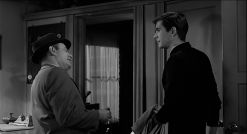

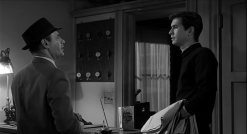
Arbogast: l’ve been trying to trace a girl that’s been missing for, oh, about a week now from Phoenix.

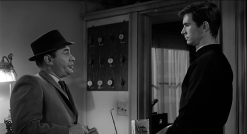
Arbogast: lt’s a private matter. The family wants to forgive her. She’s not in any trouble.
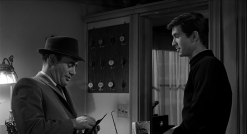
Norman: l didn’t think the police went looking for people who aren’t in trouble.
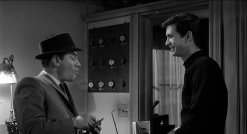
Arbogast: l’m not the police.
Norman: Oh, yeah.
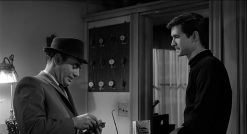
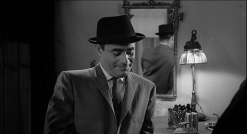
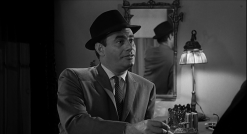
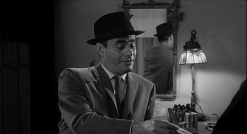
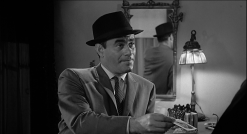
Arbogast: We have reason to believe that she came along this way. May have stopped in the area. Did she stop here?
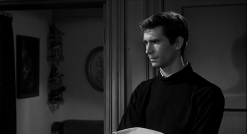
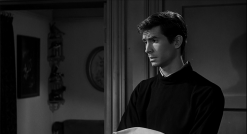
Norman: Well, no one’s stopped here for a couple of weeks.
Ha cambiado la planificación de la secuencia.
Hasta hace un instante era así:

Pero en el momento en que Arbogast se dispone a sacar la foto de Marion se da paso a un plano contraplano en estos términos:
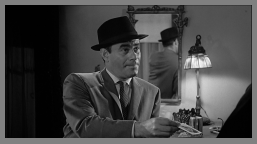
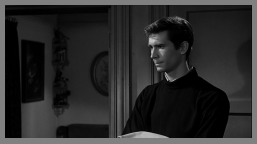
Aparece, tras Arbogast, el espejo en el que estuvo reflejada Marion, como se dibuja, tras Norman, el lugar en el que estuvo sentada, bajo ese cuadro ovalado, en ese sillón del fondo.
El espejo da, a Arbogast, al mostrar su espalda, una cierta vulnerabilidad.
Un libro que sea un mapa de nombres en el tiempo
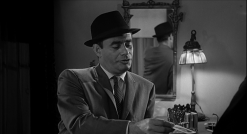
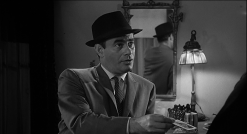
Arbogast: Would you mind looking at the picture before committing yourself?
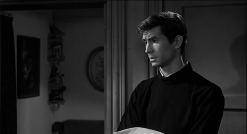


Norman: Commit myself? You sure talk like a policeman.
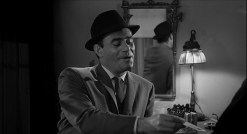
Arbogast: Look at the picture, please.
Es el momento de recordar que lo que sucedió en el centro del film fue la minuciosa crónica de las operaciones destinadas a hacer desaparecer absolutamente a Marion más allá de su muerte. Y, así, fue tragada por el territorio:



De modo que el padre simbólico viene a reivindicar su lugar y su memoria.
Muy precisamente: su presencia simbólica. Pero ese espejo, insistamos en ello, le hace vulnerable.
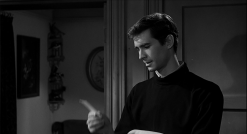
Norman: Mmm-mmm.

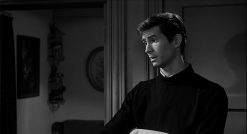
Arbogast: Sure?
Norman: Yeah.
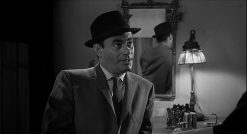
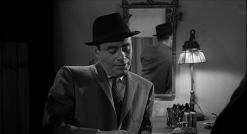
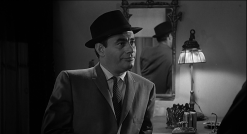
Arbogast: Well, she may have used an alias. Marion Crane’s her real name, but
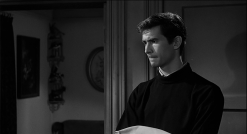
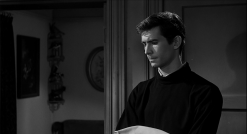
Arbogast: she could’ve registered under a different one.
Literalmente, al reclamar el registro de su existencia, Arbogast ha comenzado a resucitarla simbólicamente.
Pero sabemos cuál es el problema: que el espectador vive la escena identificado con Norman y participando de su temor a ser descubierto.
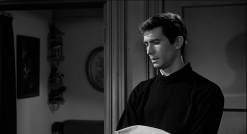
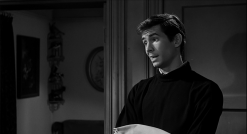
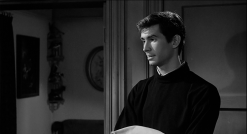
Norman: Well, l tell you, l don’t even much bother with guests registering any more. You know, one by one, you drop the formalities.
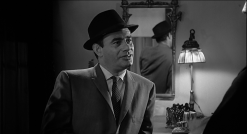
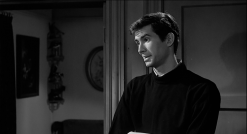
Norman: l shouldn’t even bother changing the sheets, but old habits die hard.
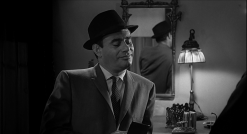
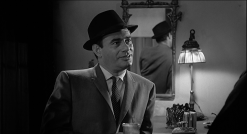
Norman: Which reminds me…
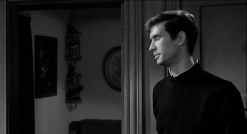

Es curioso que sólo cuando Norman enciende el signo luminoso se haga visible, en el cuadro de llaves del fondo, la cifra 12.
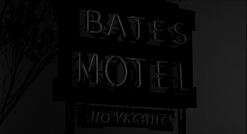
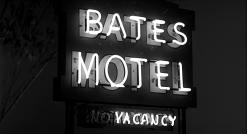
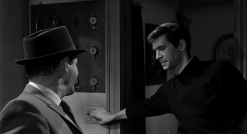
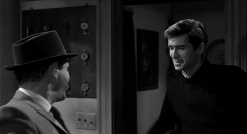

Arbogast: What’s that?
Norman: lt’s the light.
La etiqueta, diría Bateson.
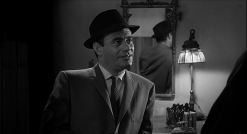

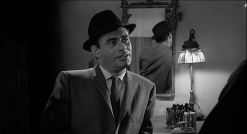
Norman: The sign. We had a couple last week, said
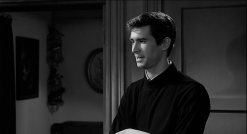

Norman: if the thing hadn’t been on, they would’ve thought this was
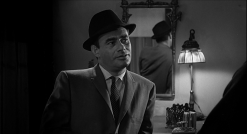
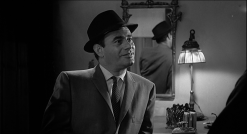
Norman: an old, deserted…
Arbogast: Well, you see, that’s exactly my point.
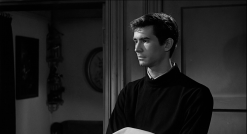
Arbogast: You said that nobody’d been here for a couple weeks, and there’s a couple came by and…
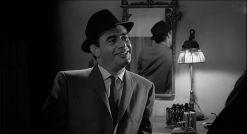
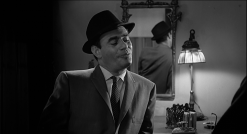
Norman: Yeah.
Arbogast: didn’t know that you were open.
Norman: Yeah.
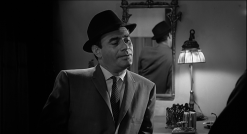
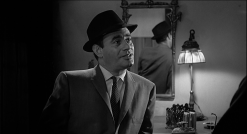
Arbogast: Well, as you say, old habits die hard.

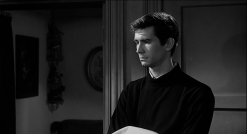
Arbogast: lt’s possible, this girl could’ve registered under another name.
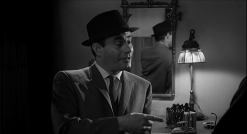
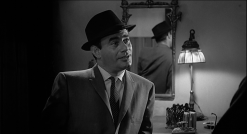
Arbogast: Do you mind if l look at your book?
Tiene que haber un libro que sea un mapa de nombres.
Uno en el que los nombres estén registrados.
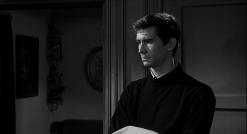

Norman: No.
Arbogast: Thank you.

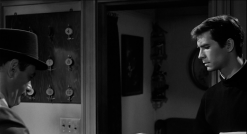
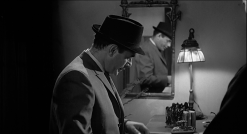
Arbogast: All right.
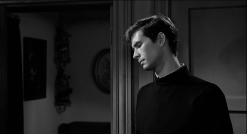


Arbogast: l’ll get the date
Y con Arbogast llega también el registro del tiempo.
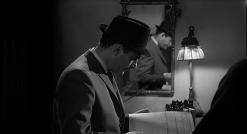
Arbogast: somewhere.
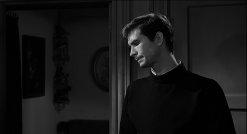
Norman: See, there’s nobody.

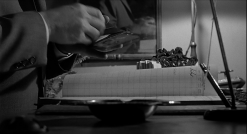

Arbogast: Let’s see now, l have a sample of her handwriting here.
Y claro está, todo ello dispara la angustia de Norman.


Lo que da paso a una nueva transformación del sistema de planificación:


Arbogast: Oh, yes.
Nombra: restituye el nombre, sustenta al sujeto
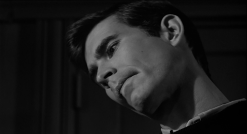

Arbogast: Here we are.




Arbogast: Marie Samuels. That’s an interesting alias.

Ya hemos dicho mucho sobre este plano. Añadamos ahora solo algún detalle suplementario. Así, el notable cambio de la luz:


Ciertamente, está justificado por la aproximación de Norman, al inclinarse, a la lámpara que se encuentra sobre la mesa.
Pero no hay duda de que, en el plano simbólico, es el libro de registro el que provoca esa luz.

Norman: ls that her?
ls that her?
Es ella -que vuelve con el registro de su muerte- lo que se le atraganta.



Arbogast: Yeah. Yeah, l think so. Marie, Marion. Samuels. Her boyfriend’s name is Sam.
Y Arbogast nombra; restituye el nombre.


Norman: Mmm-hmm


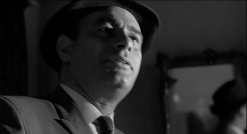
Arbogast: Was she in disguise, by any chance?


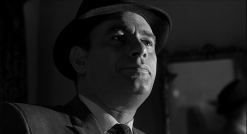
Algo ha cambiado notablemente en la luz.
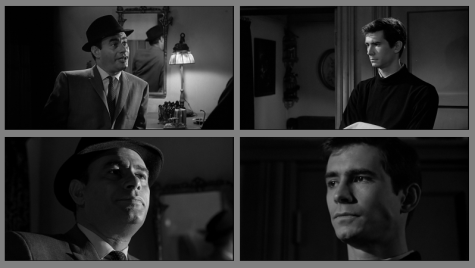
Hay mucha más luz, en Arbogast, con respecto a la que ilumina a Norman.
De modo que, cuando se pasa al plano contraplano en gran primer plano, la luz se suaviza para Norman y se intensifica para Arbogast.
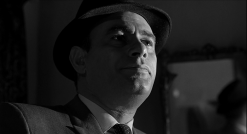
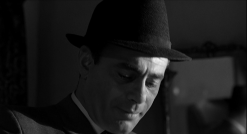

Arbogast: Wanna check the picture
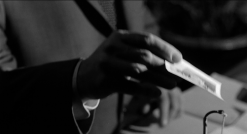

Arbogast: again?
Arbogast sostiene la imagen de Marion. También podríamos decirlo así: la sujeta.
Como ven, la presencia de Arbogast permite restituir toda la panoplia de actividades del padre simbólico en su función de sustentación del sujeto.
Un dibujo mental

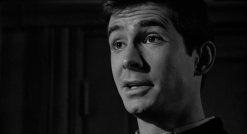
Norman: Look, l wasn’t lying
Norman se resiste a mirar la foto.
Norman: to you, Mr…
Arbogast: Oh, l know that. l know you wouldn’t lie.
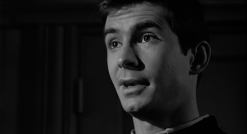
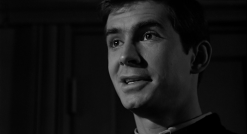
Norman: You know, it’s tough keeping track of the time around here.
Y si Arbogast despliega las funciones del padre simbólico, Norman describe las cualidades del territorio que carece de él: es difícil seguir la pista del tiempo aquí.
Cuyo correlato es el brillo lunático de sus ojos, más perceptible precisamente por el suavizado de la luz de su rostro.

Arbogast: Oh, l know, l know.
Y finalmente acepta mirar:



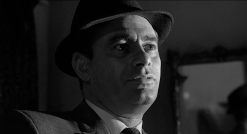
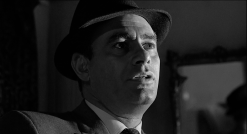
Norman: Oh, yeah.

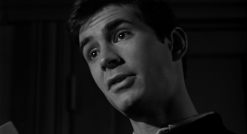

Norman: Well, it was raining an then…
Estaba lloviendo.

Traga con dificultad.


Norman: and her hair was all wet.
Su cabello estaba húmedo, mojado.
Algo sobre esto habíamos escuchado al comienzo de este diálogo:
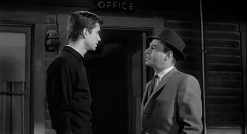

Norman: No, that’s no trouble. Today’s linen day. l always change the beds here once a week whether they’ve been used or not. Hate the smell of dampness, don’t you? lt’s such a…

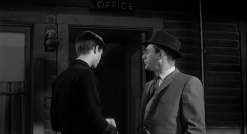
Norman: l don’t know, creepy smell. Come on.
Es la humedad de la mujer lo que él odia, lo que percibe como un olor espeluznante -es decir: siniestro.
Ahora bien, ¿cómo podría no odiarla si no le es posible separar las aguas de la madre de las del resto de las mujeres?
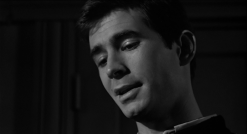
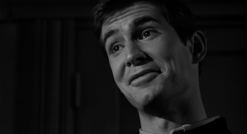
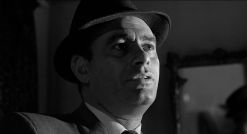

Norman: l tell you, it’s not really a very good picture of her either.
No sé si se dan cuenta que estamos en una de las cumbres de la interpretación cinematográfica de todos los tiempos.
Martin Balsam es, al menos, un actor tan impresionante como Anthony Perkins -y con más registros que éste.
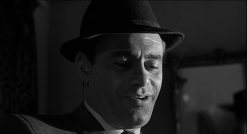
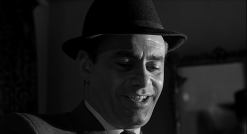
Arbogast: No, l guess not.
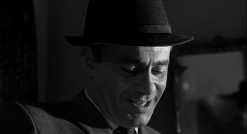
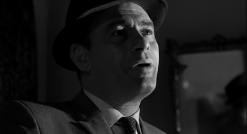
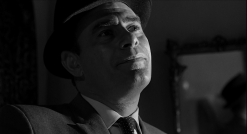
Arbogast: Tell me all about her.
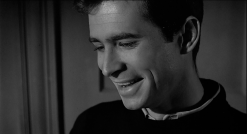


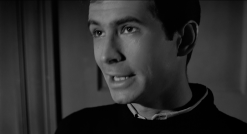
Norman: Well,
Impresionante el rostro de Norman.
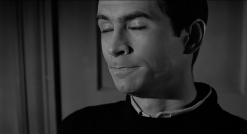
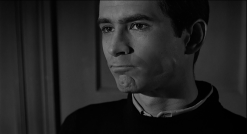
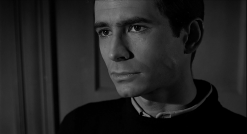

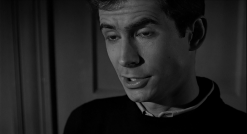


Norman: she arrived rather late one night, and she went straight to sleep
Traduce excepcionalmente bien el tenso muro que trata de interponer ante la escena que, desde el fondo de su mente, se le aproxima.
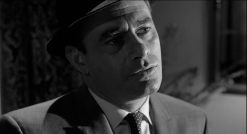
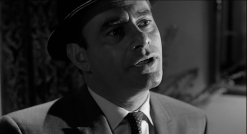
Norman: and left early the next morning.
Arbogast: How early?
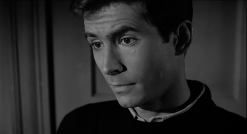
Norman: Oh, very early.
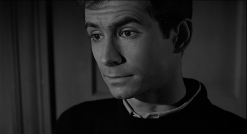
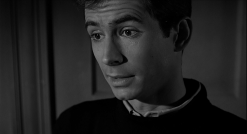
Arbogast: Mmm-hmm. Which morning was that?
Arbogast está planteando la cuestión de cómo esa escena se inscribe en el mapa del tiempo.
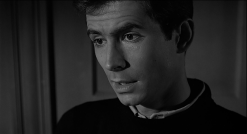

Norman: The…
Pero eso es imposible para Norman:


Norman: The… the… the… next morning.

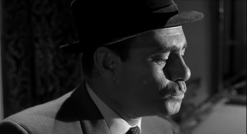
Norman: Sunday.
Arbogast: l see.Mmm-Mmm. Did anyone meet her here?
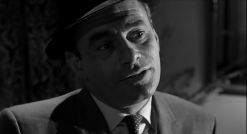
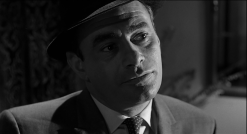
Norman: No.
Arbogast: Did she
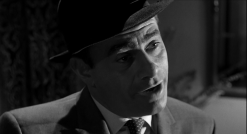

Arbogast: arrive with anyone?


Norman: No.
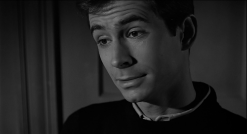

Arbogast: Aha. Did she make any phone calls or…
Norman está, ahora, en la escena, paladeándola.
¿No les recuerda a algo?
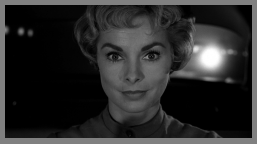


Norman: No.
Arbogast: Locally?
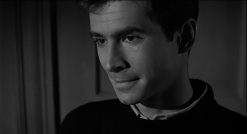

(Niega con la cabeza)
Recuerden que él no es un esquizo, sino un psicópata. La suya es, por eso, la seguridad loca del psicópata.
Le dije que los esquizos solían ser muy buenas personas. Pero los psicópatas, en cambio, son el paradigma de las malas.
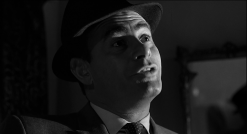
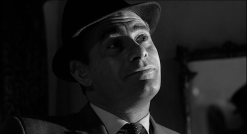
Arbogast: Did you spend the night with her?


Pero toda la complacencia en la escena se tambalea cuando es tematizado el acto sexual que late en ella:


Norman: No.
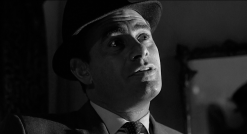
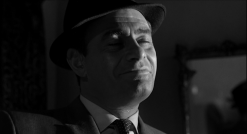
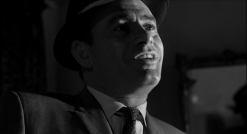
Arbogast: Well then, how would you know that she didn’t make any phone calls?



(Stammering)


Norman: Well, she was very tired and…


Norman: See, now l’m starting to

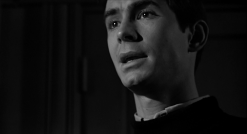
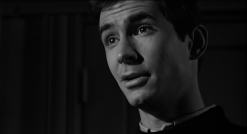
Norman: remember. l’m making a mental picture of it in my mind.
Norman intenta hacer una pintura mental.
Y bien, aunque sea un psicópata, no un esquizofrénico, cuando se acerca al núcleo candente no hay etiqueta que resista:
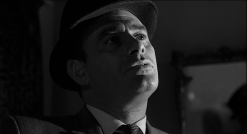
Norman: You know, if you make a mental picturisation of something…

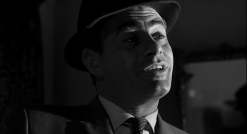
Arbogast: That’s right. That’s right. Take your time.


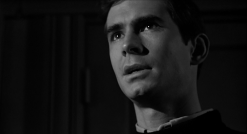
Norman: Ah… She was… She was sitting back there… No, no, she was standing back there
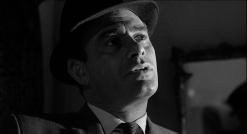
Norman: with a sandwich in her hand
En este momento, Norman se nos descubre extraordinariamente próximo al paciente de Bateson frente la camarera: Ella estaba ahí parada, con un sándwich en la mano, dispuesta a devorarme.
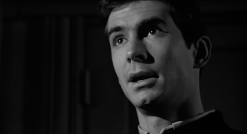


Norman: and she said she had to go to sleep early because she had a long drive
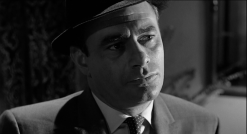
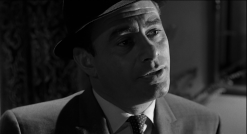
Norman: ahead of her.
Arbogast: Back where?


Norman: Back where she came from.
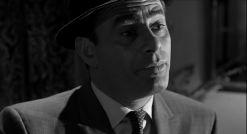
Arbogast: No, you said before that she was sitting back there. . .


Norman: Oh…
Arbogast: Standing back there…
Norman: Yes
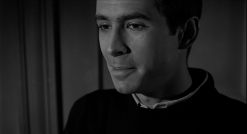

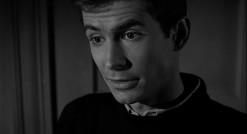
Norman: back in my parlour there. She was very hungry and l made her a sandwich
Definitivamente: ella come mucho, está hambrienta.


Norman: and then she said that she was tired and she…
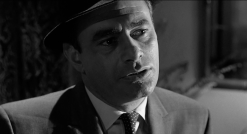
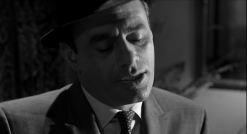
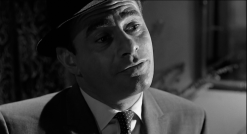
Norman: had to go right to bed.
Arbogast: l see. How did she pay you?


Arbogast: Cash? Cheque?

Norman: Cash.
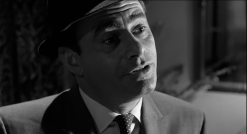
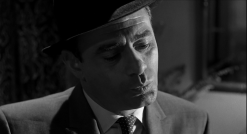

Arbogast: Cash, huh? Mmm-Mmm. And after she left, she didn’t

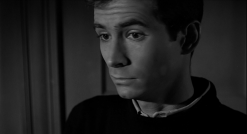
Arbogast: come back?
Norman: (Niega con la cabeza) Mmm.

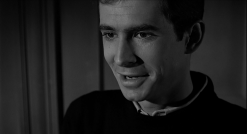
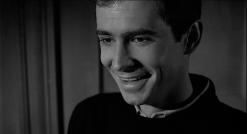
Norman: Well, why should she?

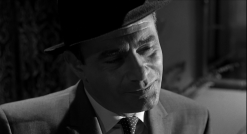
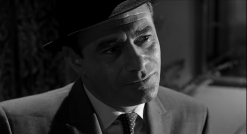


(Norman clears throat)
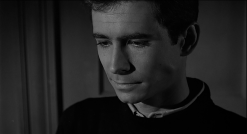
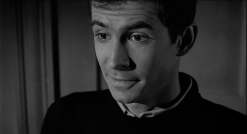
Norman: Well, Mr Arbogast, I guess that’s about it. I’ve got some work to do,
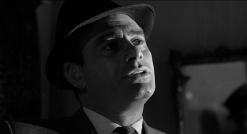
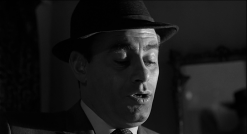
Norman: if you don’t mind.

Arbogast: Well, to tell you the truth, I do mind. You see, if it doesn’t jell, it isn’t aspic,

Arbogast: and this ain’t jelling.
Si no cuaja, no es gelatina, y esto no está cuajando.

Arbogast: It’s not coming together. Something’s missing.
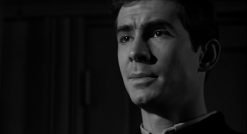
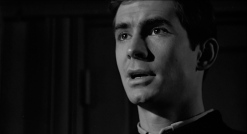
Norman: Well, I don’t know what you could expect me to know. People just come and go,
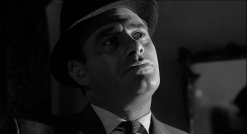
Norman: you know.
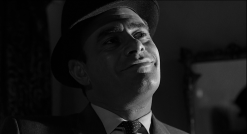
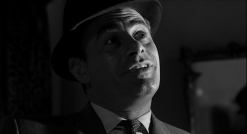
Arbogast: That’s right. She isn’t still here, is she?


Norman: No. Ja, ja.
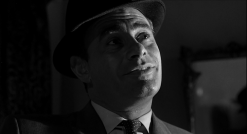
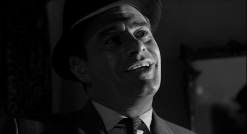
Arbogast: lf I wanted to check the cabins, all 12 of them, I’d need a warrant, wouldn’t I?
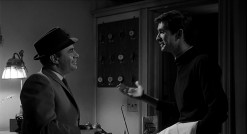
Norman: Listen, if you don’t believe me, come on with me. You can help me change beds. Okay?
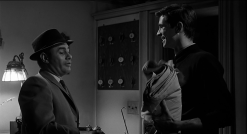
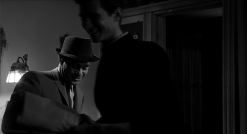
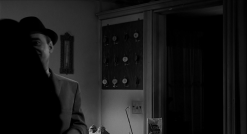
Arbogast: No, thanks.
El fantasma en torno al cual se conforma la escena fantasmática
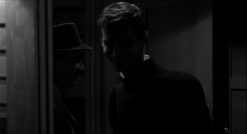
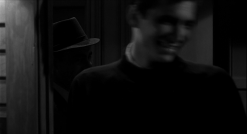
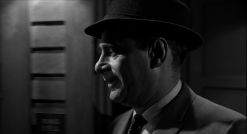
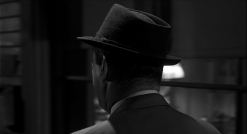
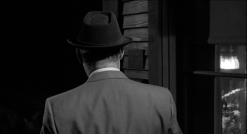


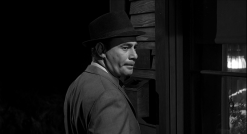
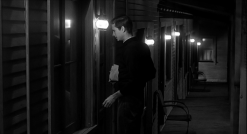
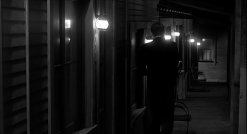
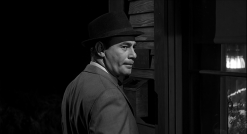
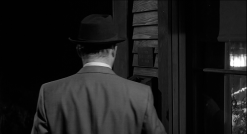
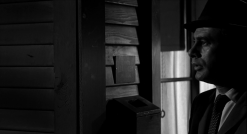
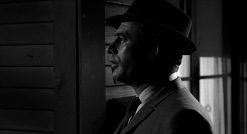
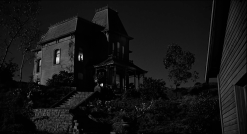
¿Quién está ahí?
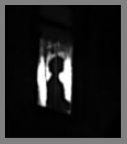
Y sobre todo, ¿cómo es posible que esté de pie? -pues dada la angulación de la mirada de Arbogast, tan contrapicada, sólo estando de pie junto a la ventana podría verse así.
¿Un truco fácil del cineasta para incrementar el miedo del espectador?
Así sucede en las malas películas. Pero no en ésta. Pues en ésta ella, estando muerta, está viva: es el fantasma en torno al cual se conforma la escena fantasmática del film.
Es, por eso, su realidad subjetiva más potente -y por ello la más intensamente presente.
¿Qué es lo próximo que ha de suceder en el film?
Ni que decirlo tiene: la aniquilación de este personaje, Arbogast, que ha ensayado a ocupar el lugar del padre.
Ahora bien, ¿saben ustedes quién le envía a la muerte?
